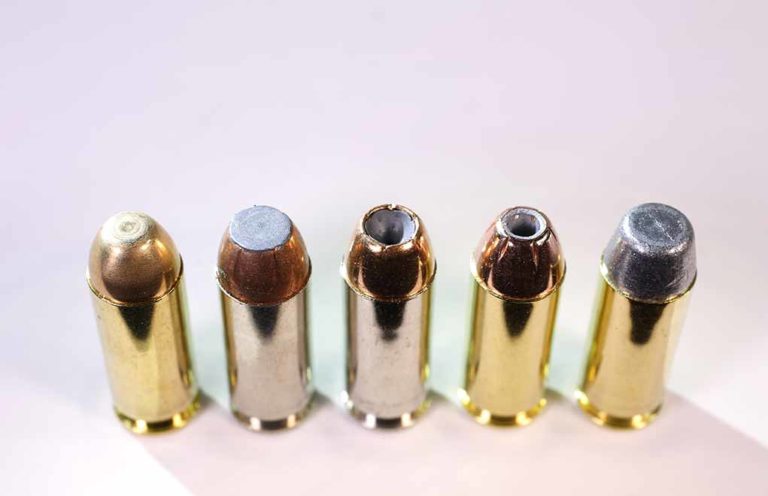
10MM defensive loads have come a long way in a short amount of time.
The 10mm pistol cartridge has been a lot of things over its nearly four decades of existence. Evolving out of the .40 G&A, a cartridge developed with the impetus of Jeff Cooper back in the 1970s, it sprang onto the scene in 1983 in the Bren Ten and with ammo from Norma. The idea was a “better than .45 ACP” cartridge that held more rounds in a pistol that was just as, if not more, ergonomic than the 1911. In addition, it could be a short magnum if needed.
What we got was “Holy Cow!” in a pistol. Somewhere in my archives, my earliest chrono log has the numbers; but simply put, the Norma specs of a 200-grain bullet at 1,200 fps were modest … compared to real life. The load delivered more like 1,300 fps, which made it an honest .44 Magnum in a pistol. We won’t speak of the velocities of the 180-grain JHPs, except to say that I turned down the opportunity to shoot a second magazine of them (this, from a 1911, because Bren Tens were exceedingly rare).
Then, after the 1986 Miami FBI shooting, the FBI declared that the 10mm was the pistol cartridge of the future. Alas, the FBI quickly found out that its offices full of accountants, lawyers and other white-collar types held few who could shoot passing scores with 10mm pistols and then-factory ammo.
.40 S&W: 10mm Goes Soft
So, the FBI kept going back to the ammo companies, asking for softer and softer ammo, until it hit on the “magic” formula: a 180-grain bullet at 950 fps. That left a lot of empty space in the 10mm case, and the Winchester ballisticians did a clever thing: They shortened it. Voilà! The .40 S&W was born, delivering a 180-grain bullet and 950 fps in a 9mm-sized pistol.
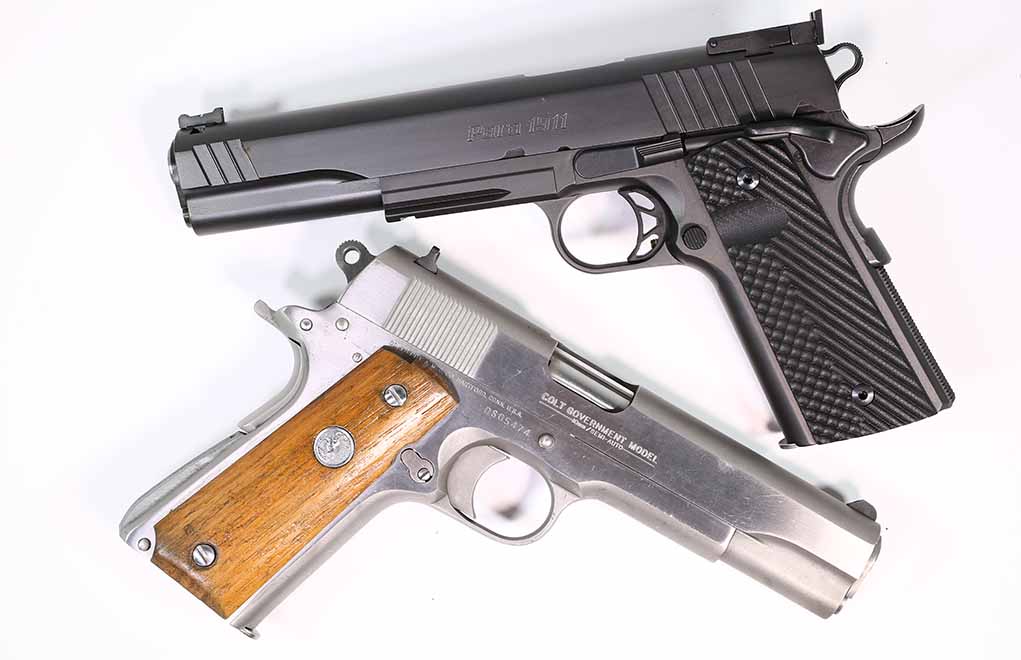
At that point, the 10mm became a “Jekyll and Hyde” caliber—one end was the soft, defensive ammo, basically a .40 S&W in a long case. At the other extreme, it was loaded to the gills (back then, handloaded) with a heavy bullet to full 10mm velocity. (There were some in-between loads, but not many.)
The .40 S&W, overpromising and under-delivering, has now fallen out of favor. The 10mm loads that duplicate it still exist, but they are legacy loadings and will only be around as long as sales warrant it.
In the place of the .40-equivalent loads, the 10mm defensive loads have stepped up a bit, in part due to the FBI test protocols. The 10mm was always a large-framed pistol caliber, not something you could shoehorn into a 9mm platform (that was what the .40 did), so users weren’t, and still aren’t, too put off by full-FBI-compliant loadings.
Get An Edge On The 10MM:
- A Perfect 10: Best 10mm Handguns
- Best 10mm Ammo For Self-Defense And Hunting (2018)
- Glock 10mm Pistols: The Stalwart Option
Because we’re looking at the bear-busters—the hunting loads here—I’ll leave the defensive ammo subject with one simple suggestion: Hornady 175-grain Flexlock Critical Duty. This is a 175-grain bullet at a listed 1,160 fps (testing usually puts it lower than that … not a bad thing), and that load will max out the scores on the FBI barrier tests. Buy it, test it, make sure your pistol is zeroed, and you’re golden.
The Bear-Busters 10s
But for hunting, you want more.
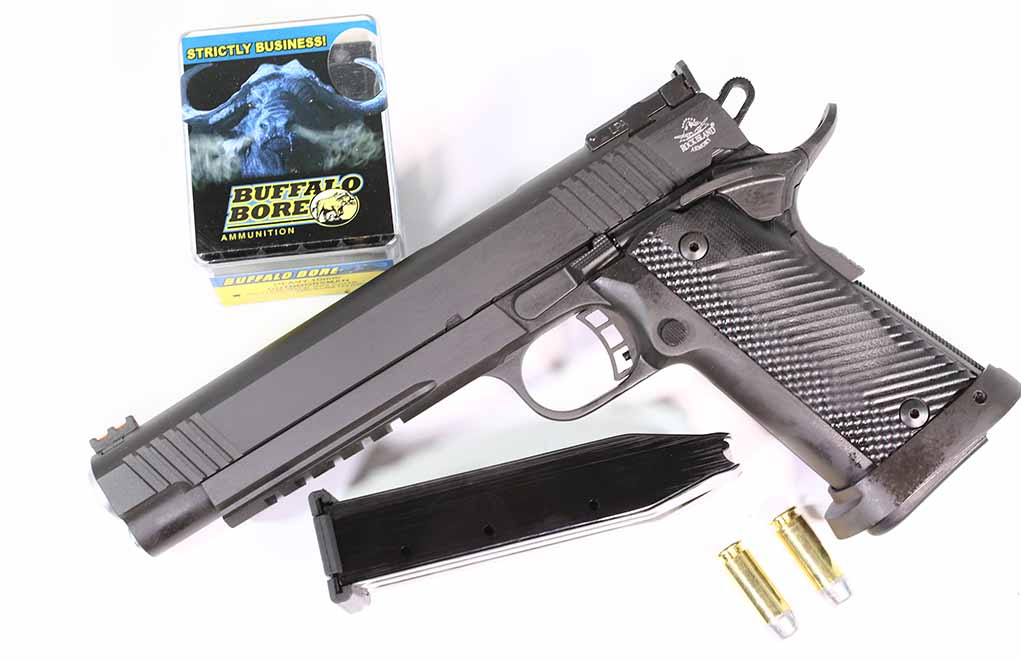
So, the hunting loads for the 10mm are often full-weight bullets or even more. You can get 10mm bullets up to 220 grains in weight. You can, if you can stand the recoil, boost them up to supersonic velocities. Even so, that’s reloading, and we’re talking factory ammo for right now.
I gathered up an array of suitable-for-hunting and suitable-for-practice hunting loads to see what numbers they would produce.
The results were as expected—and impressive. The “soft” 10mm loads were the Speer 200-grain Gold Dots, which came in at a bit above .45 ACP+P power levels. Depending on how much power you feel the need for or which particular load is most accurate in your pistol, the array of available soft- and hollow-points makes it easy to gather a selection. Then, it’s just a matter of finding which is most accurate in your gun. If it came down to a choice between two loads, I would tend to go for accuracy over sheer horsepower. I’d stick with the most accurate, even if the second-most-accurate load is 100 fps faster. (But that’s me.)
And if I were either hunting, or using ammo for protection from, bears, there would be one load of these that I’d select: the Buffalo Bore .220 hard-cast. There, you need penetration more than you need expansion, and when it comes to penetration, a hard-cast, truncated-nosed bullet is going to drill like a laser.
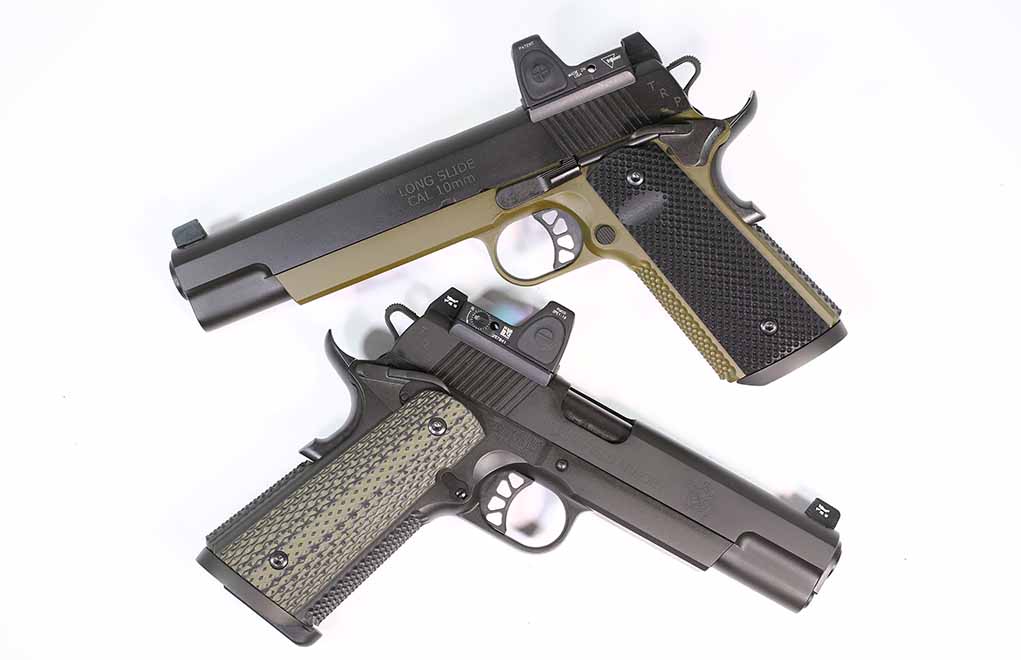
I have a few 10mm pistols. The first one is a prize gun from the old Second Chance Combat Pin Shoot (now back up and running as “The Pin Shoot”), and it is a stainless Colt Delta. It is my workhorse gun. I have fitted barrels chambered in .40 S&W and .357 Sig to it, besides the original 10mm barrel, and it has worked like a champ for the quarter-century I’ve had it.
Next in my lineup is a Para Ordnance longslide, built for hunting. With its 6-inch barrel, it can be expected to wring out every fps to be had from any given load. It is a single-stack, and I’d have to seriously de-horn it before taking it hunting or use it as a bear gun.
If I’m looking to have capacity on hand, my Rock Island Armory hi-cap longslide is just the ticket. It has a 15-round magazine, so I have plenty of capacity for hogs or bears; and a quick reload gets me 15 more.
Really, my idea of a suitable bear caliber starts at .338 Winchester Magnum and goes up from there, but you can wear a 10mm pistol all day long when hunting or in camp, and you can’t do the same with a rifle in .338 Win. Mag.
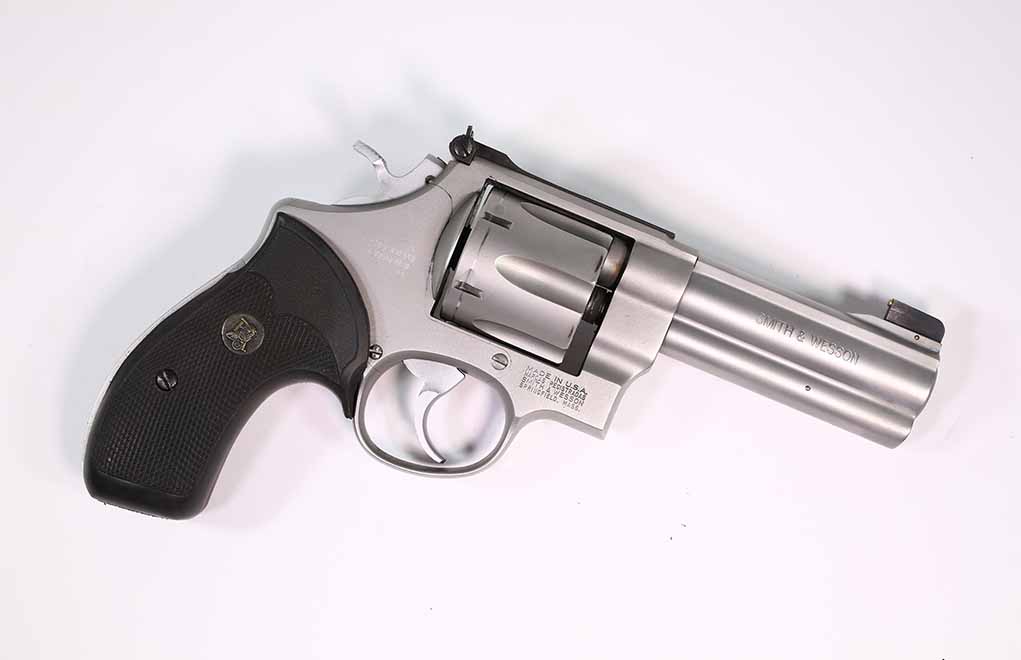
Now, if I’m feeling “modern” and want to be fully into the 21st century, Springfield Armory offers a pair of 10mm pistols in the 1911, one with a 5-inch barrel and one with a 6-inch. Both have factory-installed red-dot sights on the slide. They’re singe-stack guns as well … but not all problems are solved by sheer volume or capacity.
Glock? Nope. I checked, just to make sure, and the only big-framed Glocks I have are in .45 ACP. The Glock chambers I’ve measured are just a bit too generous for my taste, and 10mm hunting loads expand more than I like. The combination tends to be hard on brass. I’m sure there are lots of satisfied Glock 10mm owners out there, but what I have serves me well, so I’ll stick with the other Glocks I have.
There is another potential 10mm for hunting and bear defense that I don’t have, and that is the S&W 610. I have the identical revolver in .45 ACP, but not the 10mm version.
Why go with a 10mm revolver, you ask, when the same-size wheelgun could be had in .44 Magnum? Moon clips. The only faster reload for a revolver than moonclips is a second, loaded revolver. If you need a reload or you want to change what ammo you have in the gun and not lose any of it, moon clips rule.
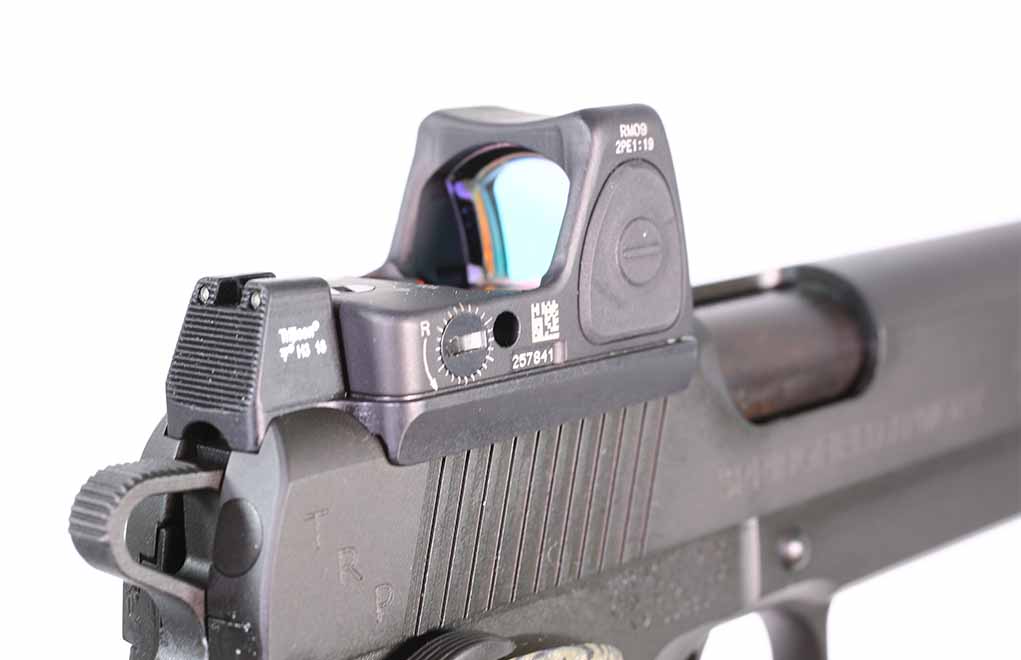
The 610 has been in and out of the S&W catalog (currently in) and with barrel lengths of 4 and 6 inches. If you’re a fan of the DA revolver rather than pistols, the 610 is a first-class choice.
10mm Territory
The popularity of the 10mm waned a bit after the introduction of the .40 S&W, but it recovered and has been growing for a number of years now. One reason is the ever-larger number of state DNRs that permit handgun hunting in formerly shotgun-only areas. The one consistent rule for that has been the requirement for the handgun to be chambered for a straight-walled cartridge. The 10mm is the most powerful of those in a self-loading pistol that isn’t a big, bulky package. Pistols chambered in .44 Magnum tend to be much larger than the 1911 and, therefore, not as convenient.
When you venture into 10mm hunting load territory, be aware that you are working in the low-to-middle portion of .44 Magnum recoil. For instance, the Buffalo Bore .220 hard-cast lead, at a listed 1,200 fps, produces a power factor of 264.
Out of the Rock Island, it did better than that. Despite the listed ballistics, a .44 Magnum is going to be pushing a 240-grain lead bullet at 1,200 fps, so you’re neck and neck with the revolver. And because pistols—1911s, in particular—don’t roll up in your hand under recoil as revolvers do, you’ll take every bit of that recoil on each shot.
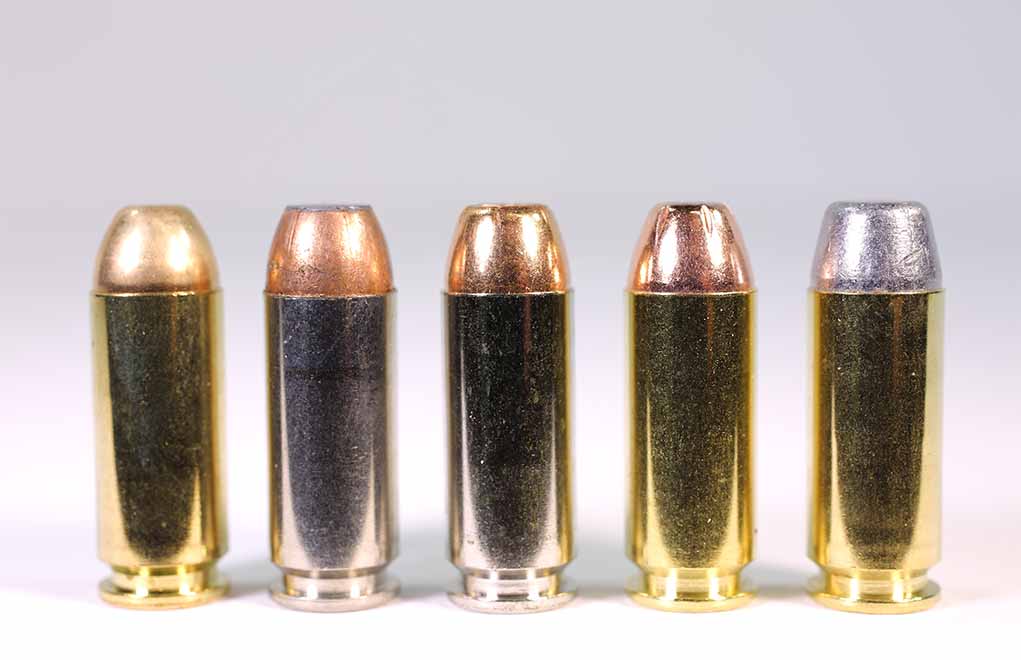
Don’t expect to spend an afternoon plinking session shooting off a couple of hundred rounds of 10mm. You will have developed a flinch long before you get that much ammo downrange.
I chronographed the loads first in my Delta, with its 5-inch barrel, and then did them all again in the Rock Island longslide and its 6-inch barrel. You’ll have to decide for yourself if the extra length of the pistol is worth the extra velocity of the barrel. One thing you will benefit from with a longslide pistol is the extra sight radius: Tagging the 1-foot-square gong on the club’s 100-yard rifle range was pretty easy, even with the hardest-kicking loads.
To get some not-so-much-recoil practice in, 10mm empties are easy to reload. You’ll find that the hot factory ammo will have expanded the cases enough so that resizing is work—but not as much as the “T-Rex”-level .44 Magnum loads some shoot, which practically require you to stand on the loading press handle. But you’ll notice more work resizing with hot 10mm empties than with regular 10mm or standard .45, 9mm, .40, etc.

The 10mm uses a standard large-pistol primer—there’s no need for magnum primers—and, due to the popularity of the .40 for so long, there’s no lack of 10mm bullets. For lead, you’ll want .401 inch; for jacketed, you’ll want .400 inch. Easy to find.
Dive Into These 10mm Ammo Tips
- Choosing the Best Best 10mm Ammo for Home-Defense Needs
- Which Cartridge Performs Better? 10mm Ballistics vs .45 ACP
- 10mm Effective Range – Pushing the Limits of Accuracy
The article originally appeared in the September 2019 issue of Gun Digest the Magazine.

Next Step: Get your FREE Printable Target Pack
Enhance your shooting precision with our 62 MOA Targets, perfect for rifles and handguns. Crafted in collaboration with Storm Tactical for accuracy and versatility.
Subscribe to the Gun Digest email newsletter and get your downloadable target pack sent straight to your inbox. Stay updated with the latest firearms info in the industry.

![Best Concealed Carry Guns In 2025 [Field Tested] Wilson Combat EDC X9S 1](https://gundigest.com/wp-content/uploads/Wilson-Combat-EDC-X9S-1-324x160.jpg)


![Best 9mm Carbine: Affordable PCCs [Tested] Ruger Carbine Shooting](https://gundigest.com/wp-content/uploads/Ruger-Carbine-Shooting-100x70.jpg)
![Best AR-15: Top Options Available Today [Field Tested] Harrington and Richardson PSA XM177E2 feature](https://gundigest.com/wp-content/uploads/Harrington-and-Richardson-PSA-XM177E2-feature-100x70.jpg)
